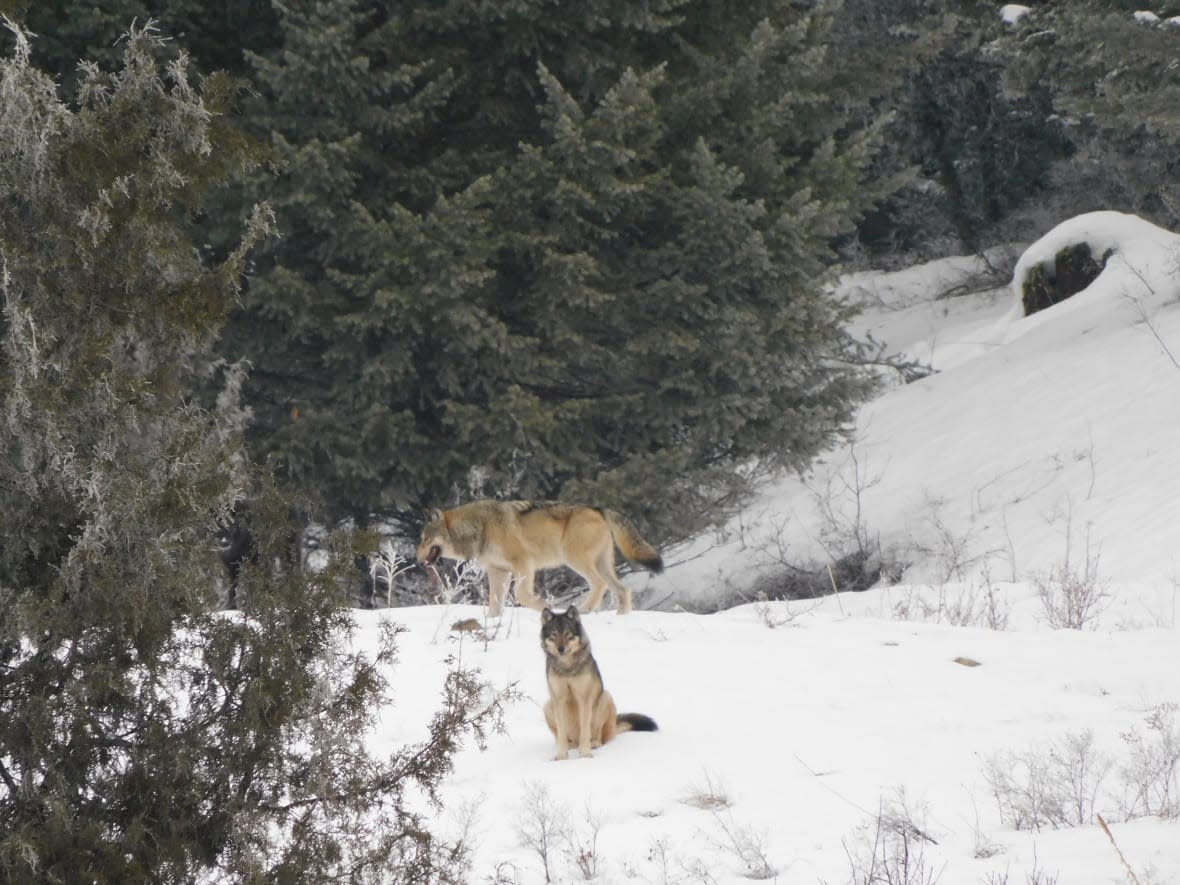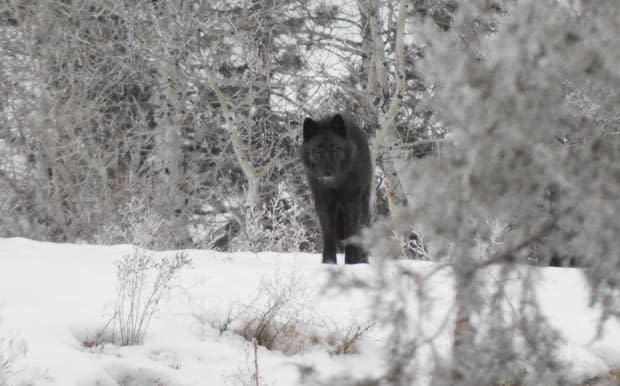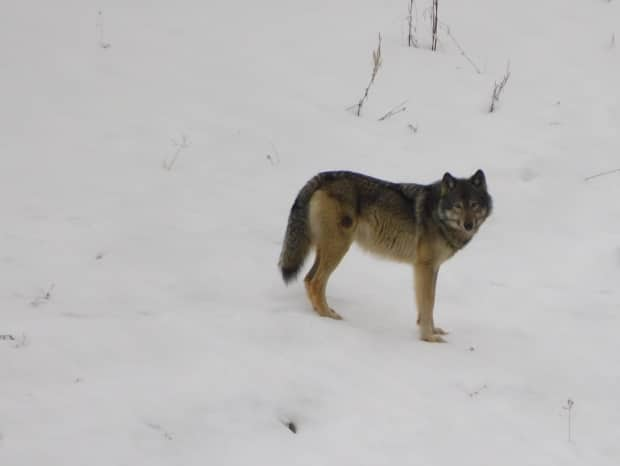Kelowna man photographs rare encounter with pack of wolves

A man's casual hike at a regional park in B.C. led to the encounter of a lifetime.
Mike Walchuck of Kelowna, B.C., was out for a late morning walk on Jan. 21 in Black Mountain - sntsk'il'ntən Regional Park when he encountered a pack of wolves.
"The first thought was like, 'Is that a big coyote?'" Walchuck said.
"But when I got a closer look I'm like no, that definitely looks bigger than a coyote … and then I saw the black one came out."
About half-way through an eight-kilometre hike, Walchuk came to an open field with fewer trees — where he first caught a glimpse of the animals.
The park, located in Kelowna's eastern outskirts, borders a golf course, with residential areas several kilometres away. It's rare to spot a wolf in the area.
'I've never seen wolves before'
Walchuck has hiked the area several times and explored several other parks in the Okanagan. He and his wife moved to the area in 2020 to get closer to nature.
He describes himself as a wildlife nerd who enjoys the outdoors, and it's not uncommon for him to see wildlife on his walks.
"I have seen coyotes, deer, and elk, but I've never seen wolves before."

Walchuck says they were about 150 metres away when he first spotted them. He's not certain how many wolves were in the area, but he saw four animals.
He believes there were likely more.
Wolf sightings rare in area, says professor
Adam Ford, a biology professor at the University of British Columbia Okanagan, says Walchuck was lucky to get so close to the elusive carnivores.
He says wolves have evolved to be fairly skittish around people and tend to be more active at night.
Ford adds that the animals have large territories and will pass through areas like the Okanagan while pursuing prey like elk or deer.
"It's hard to know if that area in Black Mountain is at the edge of their range and they're just occasionally coming in," he said.
Ford says the animals in the Central Okanagan may stick around if there's food, but they could travel as far away as Sicamous — about 125 kilometres north of Kelowna — or to the U.S. border if that's where their prey is.
He adds that it's unlikely wolves in the Interior will become habituated to urban areas the way coyotes have.
"We typically don't see wolves and people in the same areas," he said. "But we've also seen cases in places like Banff National Park where wolves have been food-conditioned by irresponsible campers which has led to the destruction of those wolves because it became unsafe for people."

In 2019, a wolf attacked a man while he was sleeping in a tent with his family in Banff National Park.
Parks Canada tracked the wolf believed to be responsible for the attack to a location about one kilometre south of the campground and killed it.
The agency said it was the first incident of its kind within a national park.
Avoid encounters with wildlife: WildsafeBC
WildsafeBC, a non-profit organization educating people about wildlife safety, says there are approximately 8,500 wolves in the province.
WildsafeBC co-ordinator Lisa Lopez says human-wolf interactions are extremely rare. But she says people should avoid potential encounters with wildlife, even if they are tempted to take a photo or observe the animals.
"If they are protecting a kill, if they are on a hunt, or protecting young … perhaps avoid that area," she said.
Lopez adds it's important to always keep pets leashed, because wolves are territorial and could see a pet as a potential threat or prey.


